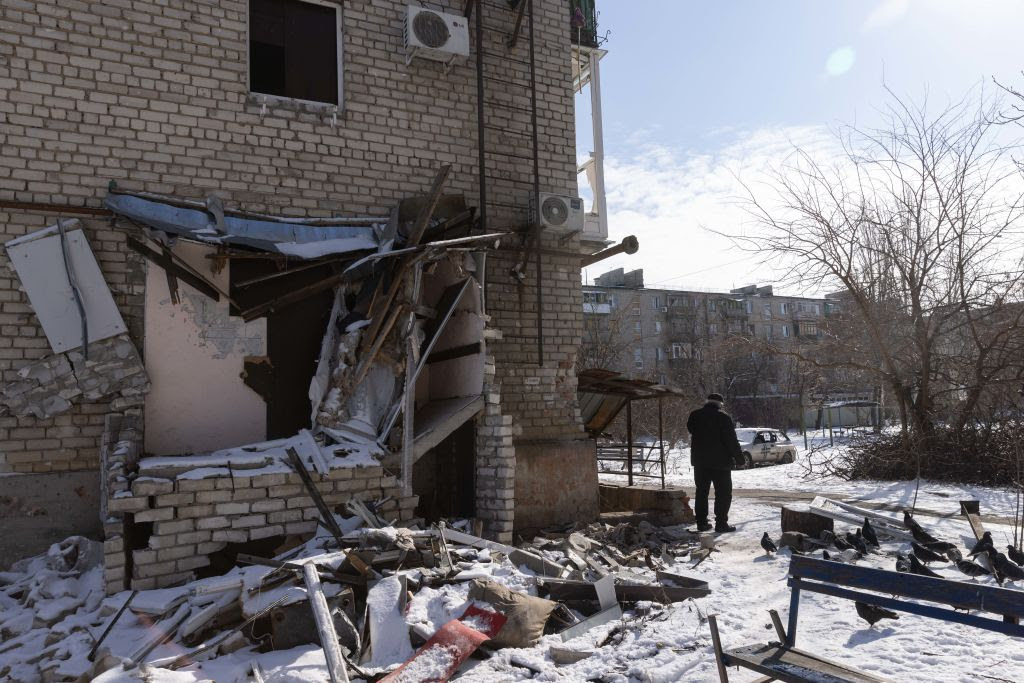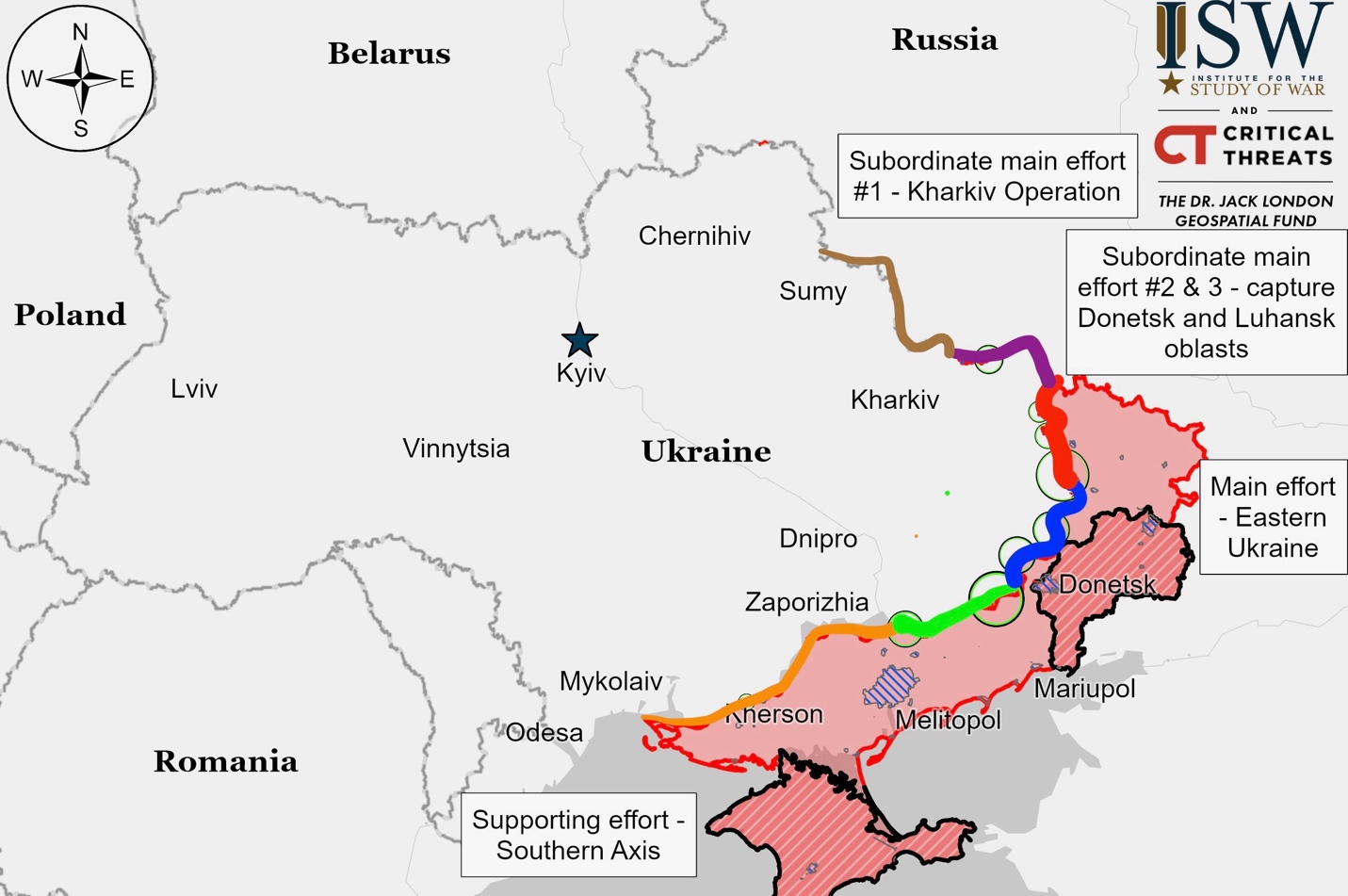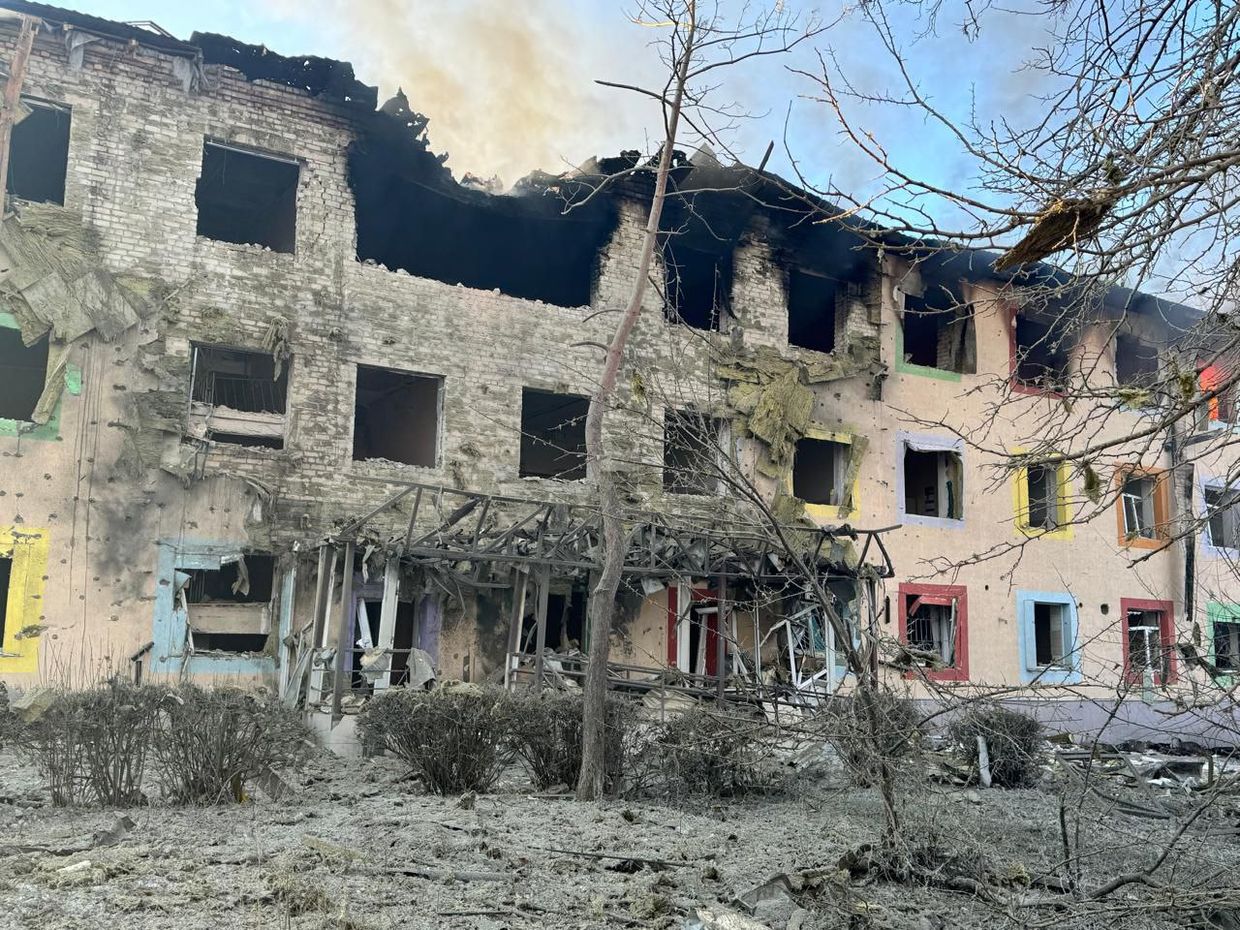Summary of the Day:
A Financial Times investigation exposed widespread execution of Ukrainian prisoners of war by Russian forces, with evidence pointing to senior commanders’ direct involvement in ordering these war crimes. The investigation documented 43 executions with 109 victims in 2024, suggesting this is part of a broader “strategy of criminality” that includes torture and abuse across occupied territories.
North Korean forces operating alongside Russian units in Kursk Oblast have adapted their tactics after suffering approximately 4,000 casualties, primarily from Ukrainian drone strikes. They’ve reduced assault group sizes from 50 to 10-15 personnel, with 1,000 additional troops currently training on new equipment in Russia. Russian experts have also modified North Korean KN-23 ballistic missiles to improve their precision.
On the battlefield, both Ukrainian and Russian forces made advances near Pokrovsk, while Russian forces also gained ground near Velyka Novosilka. Russia is reportedly increasing its production of glide bombs and modernizing its cruise missiles. Meanwhile, U.S. Special Representative Keith Kellogg met with President Zelensky in Kyiv to discuss security guarantees and the return of Ukrainian POWs, while tensions emerged over Russia’s attempt to misrepresent China’s position on the war during the G20 Foreign Ministers’ summit.
Picture of the Day:
 Residents of Lyman hide in the basements of their houses from constant shelling by Russian artillery shortly before the third anniversary of the war in Ukraine, amid ceasefire negotiations. (Yevhen Titov / NurPhoto via Getty Images)
Residents of Lyman hide in the basements of their houses from constant shelling by Russian artillery shortly before the third anniversary of the war in Ukraine, amid ceasefire negotiations. (Yevhen Titov / NurPhoto via Getty Images)
Beyond Ukraine – The March Towards World War
U.S.-Russia talks in Saudi Arabia on February 18 have raised international concerns after Moscow demanded NATO’s withdrawal from eastern Europe as a condition for normalizing relations. The U.S. initially rejected this demand, but European leaders worry about potential concessions under Trump’s administration. French President Macron and UK Prime Minister Starmer plan to visit Washington to discourage such compromises. Eastern European officials express particular alarm, with Romania’s presidential chief of staff warning of a “new Yalta” – referencing the 1945 division of Europe into spheres of influence. The exclusion of Ukraine from these high-level talks has heightened anxiety among European allies, potentially threatening regional stability and NATO’s unified stance against Russian aggression.
Russian state hackers are increasingly targeting Signal messenger accounts of military personnel, government officials, journalists, and activists, according to Google’s Threat Intelligence Group. The hackers exploit Signal’s “linked devices” feature using malicious QR codes to intercept messages in real-time. Of particular concern, the Russian military intelligence unit APT44 (Sandworm) has used this method on captured devices in Ukraine to monitor sensitive communications. While Signal has updated its security measures in response, experts warn this cyber espionage trend could spread globally, potentially compromising secure communications used for diplomatic and military purposes worldwide.
Belarus announced that the joint Russian-Belarusian military exercise “Zapad-2025” will take place in mid-September. This collaborative military exercise could further strengthen the military ties between Russia and Belarus, potentially increasing regional tensions.
The Path to Peace
U.S. President Trump’s special envoy Keith Kellogg is in Kyiv presenting potential peace terms that would require Ukraine to surrender Russian-occupied territories, abandon NATO membership aspirations, and replace President Zelensky’s leadership. The proposal, emerging from U.S.-Russia talks in Saudi Arabia, includes lifting sanctions against Russia and granting Moscow veto power over Ukraine’s military capabilities. The U.S. is considering offering Ukraine automatic NATO membership if Russia violates any agreement, though Trump administration official Pete Hegseth stated NATO membership was not a “realistic outcome” of peace negotiations.
UK Prime Minister Keir Starmer is proposing a European peacekeeping mission involving 30,000 troops from ten NATO nations, led by Britain and France. The Joint Expeditionary Force (JEF) would be stationed in Ukrainian cities including Poltava, Dnipro, and Kryvyi Rih, protecting critical infrastructure while avoiding front lines. While the U.S. supports this concept, they’ve specified American troops would not participate, and Russia has declared NATO troop deployment on Ukrainian soil “unacceptable.” Ukraine’s military intelligence chief Kyrylo Budanov predicts a 2025 ceasefire, though President Zelensky suggests needing 100,000-150,000 troops to deter Russia.
The situation has heightened tensions among allies, with European leaders meeting in Paris to discuss Ukraine’s NATO options following their exclusion from key negotiations. At the G20 foreign ministers’ meeting in Johannesburg, UK Foreign Secretary David Lammy criticized Russian Foreign Minister Sergey Lavrov’s lack of interest in peace negotiations, accusing Russia of “Tsarist imperialism” and dismissing Lavrov’s statements as “tired fabrications.” Both Ukrainian and European leaders oppose the proposed peace terms, viewing them as capitulation to Russian demands.
Situation On The Land, Sea, and Air in Ukraine
A Financial Times investigation has revealed systematic execution of Ukrainian prisoners of war by Russian forces across eastern Ukraine and Zaporizhia Oblast, with incidents significantly increasing in 2024. Ukrainian officials are investigating 43 executions involving 109 victims, with footage showing Russian soldiers, including members of the 30th Motorized Rifle Brigade’s “Storm” penal unit, executing unarmed Ukrainian POWs near Pokrovsk. Notable incidents include the 155th Naval Infantry Brigade’s involvement in POW beheadings and executions in Kursk Oblast, and reported executions near Robotyne, with experts suggesting hundreds of unreported cases as the practice becomes routine along frontlines.
Senior Russian officials, including Security Council Deputy Chairperson Dmitry Medvedev and Chechen Republic Head Ramzan Kadyrov, have openly called for POW executions, while President Putin has praised units linked to these crimes. Global Rights Compliance President Wayne Jordash identifies this as part of a broader “strategy of criminality” including torture and abuse of civilians in occupied territories, emphasizing that under international law, officials who fail to prevent these war crimes are culpable, indicating systematic POW abuse throughout Russia’s chain of command.
Ukraine’s Main Directorate of Intelligence (HUR) has confirmed responsibility for a covert operation targeting Russian drone operators, involving approximately 80 sets of “Skyzone Cobra X v4” FPV drone goggles distributed to Russian military units in early February through “Russian volunteers.” Some goggles contained hidden explosive devices – approximately 15 grams of plastic explosive near the cooling fan – with remote detonation capabilities, resulting in serious injuries to at least eight Russian drone pilots between February 4-7. According to HUR sources, these operations against Russian forces are ongoing, targeting the increasingly crucial role of low-cost FPV drones being used by both sides for reconnaissance and combat operations.

Ukrainian Operations in the Russian Federation – Initiative Russia
Russian forces continued offensive operations in Kursk Oblast launching ground attacks near several settlements around Sudzha including Lebedevka, Pogrebki, Guyevo, and Kurilovka, though no confirmed advances were made. While Russian sources claimed advances near Lebedevka, Sverdlikovo, and Nikolayevo-Darino, as well as cross-border movements into Ukraine’s Sumy Oblast near Novenke and Basivka, these claims remain unconfirmed. A Ukrainian platoon commander reported that Russian forces are now conducting infantry assaults with fewer vehicles and lower quality personnel, including wounded servicemembers.
Ukrainian intelligence reports significant North Korean military involvement in Kursk Oblast, with GUR Head Lt. Gen. Kyrylo Budanov revealing approximately 4,000 North Korean casualties. The North Korean forces, embedded within Russian units, have adapted their tactics by reducing assault group sizes from 50 to 10-15 personnel and operating more cautiously in response to Ukrainian drone strikes. GUR Deputy Head Maj. Gen. Vadym Skibitskyi noted that 1,000 North Korean troops are training on new equipment in Russia, showing improved combat effectiveness with tanks and drones. Additionally, Russian experts have modified North Korean KN-23 ballistic missiles to increase their precision from their previous 500-1,500-meter margin of error.
Russian forces have reclaimed nearly two-thirds of territory previously captured by Ukraine in Kursk Oblast, according to Russian General Sergei Rudsky. Of the 1,268 square kilometers initially seized by Ukrainian forces in August 2024, about 500 square kilometers remain under Ukrainian control. While Russia claims its forces are advancing on all fronts, Ukraine’s military hasn’t confirmed these statements. The conflict in Kursk Oblast has resulted in significant Russian losses, with Ukraine reporting approximately 40,000 Russian casualties, including 16,000 fatalities.
Kharkiv Front – Initiative Russia
Russian forces launched ground attacks near Vovchansk, northeast of Kharkiv City, but failed to advance. Ukrainian forces reportedly repelled a Russian mechanized assault in the area, claiming to have destroyed 30 Russian personnel and multiple armored vehicles.
Luhansk Front – Initiative Russia
Kupyansk
Russian forces continued offensive operations in the Kupyansk direction, conducting attacks near Zapadne, Petropavlivka, and Stepova Novoselivka, but failed to make confirmed advances. Russian sources claimed unconfirmed advances north of Kindrashivka, southeast of Petropavlivka, and north of Stepova Novoselivka.
Borova
Russian forces continued attacks near Zahryzove and Makiivka in the Borova direction but made no confirmed advances. Russian sources claimed unconfirmed advances west of Kruhlyakivka, south of Lozova, and southwest of Makiivka.
Lyman
Russian forces continued attacks northeast of Lyman near Yampolivka, Balka Zhuravka, Novolyubivka, and Kolodyazi, as well as in the Serebryanske forest area but made no advances. Ukrainian forces reportedly launched counterattacks near Yampolivka and in the Serebryanske forest, and claimed to have destroyed a North Korean-supplied artillery system in Luhansk Oblast.
Donetsk Front – Initiative Russia
Siversk
Russian forces continued attacks northeast of Siversk near Bilohorivka, Hryhorivka, and east of Siversk near Verkhnokamyanske but failed to make any advances.
Chasiv Yar
Russian forces continued attacks in and around Chasiv Yar including near Hryhorivka, Vasyukivka, Kurdyumivka, and Ozaryanivka, but made no confirmed advances. Russian sources claimed unconfirmed progress west of Hryhorivka.
Toretsk
Russian forces conducted attacks near Toretsk and Leonidivka but failed to make any advances.
Pokrovsk
Russian forces launched multiple attacks around Pokrovsk targeting areas near Zelene Pole, Yelyzavetivka, Promin, Novotoretske, Vozdvyzhenka, Vodyane Druhe, Serhiivka, Pishchane, Nadiivka, Sribne, and Kotlyne. Both Ukrainian and Russian forces made confirmed advances in central Zaporizhzhia. Ukrainian forces reported successful counterattacks near Myrne and Zvirove, claiming to have pushed Russians out of Pishchane. Ukrainian officials noted that Russian forces are using fewer armored vehicles due to weather conditions and exhaustion.
Andriivka
Russian forces attacked near Andriivka, Ulakly, Kostiantynopil, and Rozdolne in the Kurakhove direction but made no confirmed advances. Russian sources claimed to have captured Ulakly and made advances near Kostiantynopil and Andriivka, while Ukrainian forces reportedly launched counterattacks near Kostiantynopil.
Velyka Novosilka
Russian forces conducted operations around Velyka Novosilka attacking near Novyi Komar, Novoocheretuvate, Pryvilne, Burlatske, and Novosilka. Geolocated footage confirmed Russian advances south of Novosilka. Near Novyi Komar, Ukrainian forces reported repelling a Russian mechanized assault, destroying two tanks and seven armored personnel carriers. Russian sources claimed additional unconfirmed advances near Skudne, Dniproenerhiia, Vremivka, and Novosilka’s southeastern outskirts.
Zaporizhia Front – Initiative Russia
Russian forces launched offensive operations in western Zaporizhia Oblast, particularly focusing on areas near Novoandriivka, Mali Shcherbaky, and Stepove. While they engaged in combat operations around Robotyne, no confirmed territorial gains were reported. Russian sources claimed to have partially captured Pyatykhatky and made advances near Kamyanske and Luhove, though these claims remain unverified.
Kherson (Dnipro River) Front – Initiative Russia
There were no reported military ground operations from either Ukrainian or Russian forces in the Kherson region.
Ukraine News
Russian forces launched a combined assault of 14 missiles and 161 drones against Ukraine. Ukrainian forces intercepted 80 drones across multiple regions including Kharkiv, Kyiv, Odesa, and other areas. The strikes damaged civilian, enterprise, and energy infrastructure in Cherkasy, Kyiv, and Odesa regions. Additionally, Russian forces hit a ten-story building in Kherson Oblast with glide bombs.
Emergency services continue working at the Chornobyl Nuclear Power Plant, addressing damage from a Russian drone strike that occurred on February 14. Teams are dismantling damaged shelter structures and putting out remaining fires.
U.S. Special Representative Keith Kellogg met with President Volodymyr Zelensky in Kyiv to discuss battlefield conditions, POW returns, and security guarantees. Zelensky expressed optimism about establishing strong security and investment agreements with the United States, describing the meeting as “restoring hope” while noting Ukraine has proposed efficient ways to achieve these goals.
The Trump administration has offered Ukraine a revised minerals agreement after President Zelensky rejected an initial proposal seeking 50% interest in Ukraine’s natural resources and infrastructure through a joint investment fund. U.S. National Security Advisor Mike Waltz called Kyiv’s resistance “completely unacceptable,” urging Ukraine to accept the deal. While Zelensky remains open to investment, he maintains that Ukraine requires security guarantees alongside any economic agreements, amid tensions over Trump’s criticism of delayed Ukrainian elections.
Ukraine’s State Bureau of Investigation is moving to nationalize 49.5% of Poltava Mining, a major iron ore exporter owned by oligarch Konstantin Zhevago through Ferrexpo. The February 20 announcement includes plans to seize 541 properties, 172 land plots, and over 2,300 railway cars. This action follows Zhevago’s arrest in absentia for alleged embezzlement of Hr 1.4 billion ($33.6 million) and comes amid a separate Hr 157 billion ($3.78 billion) civil claim against the company for illegal mining. Ferrexpo denies all allegations and plans to defend itself in court.
Innocent Victims Of War
The casualty count of civilians in the past 24 hours: (Russian War Crimes)
DEATHS: 7 INJURIES: 30
Russian attacks across multiple Ukrainian regions resulted in seven deaths and 30 injuries. In Donetsk Oblast, aerial bombs struck Kostiantynivka, killing two and injuring eight, while another death occurred in Predtechyne. Kherson Oblast reported two deaths and 13 injuries, including two children. In Kharkiv Oblast’s Kupiansk, two men were killed and five others injured. Additional injuries were reported in Zaporizhzhia Oblast, while an energy facility strike in Odesa Oblast left 49,000 residents without power.
 The aftermath of Russian attacks against Donetsk Oblast, Ukraine. (Governor Vadym Filashkin/Telegram
The aftermath of Russian attacks against Donetsk Oblast, Ukraine. (Governor Vadym Filashkin/Telegram
Ukraine’s Allies
European Council President Antonio Costa and European Commission President Ursula von der Leyen will visit Kyiv on February 24, marking the third anniversary of Russia’s full-scale invasion. The visit coincides with a planned summit of Ukraine’s partners, announced by President Volodymyr Zelensky. The European leaders’ visit aims to demonstrate continued EU support for Ukraine, coming amid concerns over U.S. commitment following Donald Trump’s recent criticism of Zelensky.
Life in Russian Occupied Ukraine
Ukraine’s military intelligence reported that Yevgeny Bogdanov, deputy head of the Russian-occupied Berdiansk administration, was killed when his Renault Duster exploded. Bogdanov had overseen finances and Russian fortification construction in the occupied Zaporizhzhia Oblast port city. The incident occurred in the strategic Azov Sea location of Berdiansk.
Russian Mobilization and Defense Industrial Base
Russian military production is ramping up significantly in 2025, according to a February 14 report from the Royal United Services Institute (RUSI). The planned production includes 750 Iskander ballistic missiles and 560 Kh-101 cruise missiles. The Kh-101 missiles are being upgraded with improved tracking systems and diverse warheads to counter Ukrainian electronic warfare. Russia is also nearly doubling its glide bomb production from 40,000 in 2024 to over 70,000 ordered for 2025.
Russian War Losses (Today/Total)
| Troops +1280 864860 |
Tanks +12 10146 |
Artillery +52 23462 |
Arm. Veh. +18 21130 |
Aircraft 370 |
Heli 331 |
Ships 28 |
Controlling the Narrative and Russian Propaganda
President Donald Trump stated Russia has a stronger negotiating position in potential Ukraine peace talks due to territorial occupation and criticized Ukrainian President Zelensky as a “dictator without elections,” though Ukraine’s constitution prohibits elections during martial law, which has been in effect since Russia’s invasion; these comments align with Kremlin propaganda questioning Zelensky’s legitimacy since his first term would have normally ended May 20, 2024. The Financial Times reports the United States has objected to including “Russian aggression” language in a G7 statement, suggesting strain in G7 unity regarding Ukraine, following Trump’s statements blaming Ukraine for the war, criticizing Zelensky, and suggesting Russia’s return to the G7.
The Kremlin appears to be misrepresenting China’s position on the Ukraine war following a meeting between Russian Foreign Minister Sergey Lavrov and Chinese Foreign Minister Wang Yi at the G20 Foreign Ministers’ summit in South Africa. While Russia’s official statement claimed China emphasized addressing the war’s “root causes” – which Russia defines as NATO expansion – China’s own readout attributed this stance to Russia, not China. This discrepancy suggests Russia is attempting to portray China as more aligned with its position than China is willing to publicly acknowledge.
Source Material
Institute for the Study of War – understandingwar.org
The Kyiv Independent – kyivindependent.com
Kyiv Post – kyivpost.com
